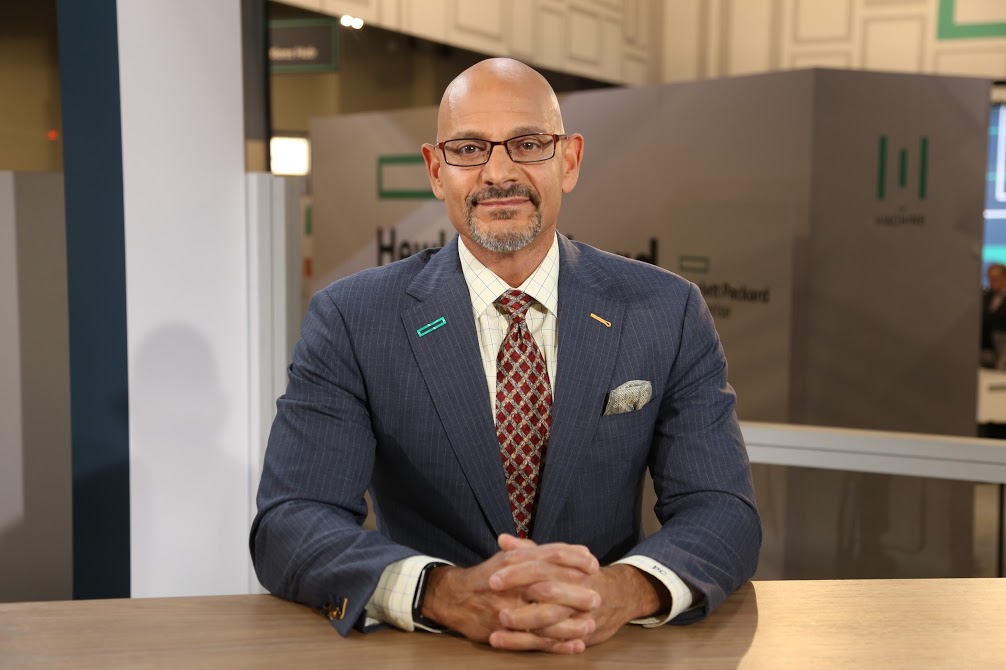 INFRA
INFRA
 INFRA
INFRA
 INFRA
INFRA
In 2105, Hewlett Packard announced it was splitting its businesses in two to create a more agile company for its enterprise solutions. Hewlett Packard Enterprise Co. is now responsible for the OEM Solutions business unit, which has achieved double-digit growth over the past five years, according to Phillip Cutrone (pictured), vice president and general manager of worldwide OEM, Data Center Infrastructure Group, at Hewlett Packard Enterprise Co.
“We have thousands of customers, multiple billions of dollars of revenue … for the past five years. [OEM original equipment manufacturer] is an awesome business,” Cutrone said.
John Furrier (@furrier) and Dave Vellante (@dvellante), co-hosts of theCUBE, SiliconANGLE Media’s mobile live streaming studio, interviewed Cutrone during HPE Discover in Las Vegas, Nevada. They discussed the direction of the OEM business and why it is still very relevant for the company. (* Disclosure below.)
Supplying the equipment for the digital transformation is just as important as the technology itself, according to Cutrone, who spoke about the industries that are relying on the HPE OEM servers and equipment, such as telecommunications, manufacturing and healthcare. Having a flawless execution at the server level to accumulate the petabytes of data collected for future use in analytics is critical for these use cases, he stated.
There are four S’s that make HPE the ideal OEM partner, according to Cutrone: solution, supply chain, services and staff. The HPE solutions portfolio is strong, and OEMs care about the quality, features, and value they get from products, he explained. Equipment longevity is important and integral for their solutions from the beginning.
On the supply chain side, it is critical for OEMs to have access to the latest technology to compete globally. HPE could set the stage for a company to go global rather quickly, Cutrone stated. Along with the equipment and technology, services are a must, he added.
“Once it’s deployed, [customers] need someone to maintain it. They’ll do first-level call on their application or something along those lines, but they need someone to get on-site and actually help them fix it if something were to happen. We give that assurance in our services,” Cutrone said.
As for the last “S,” staff, OEM partnerships require dedication and resources. Cutrone compared the HPE staff to a control tower. He noted the importance of having a devoted sales team focused on engineering to manage and maintain the entire ecosystem.
Since HP split in two, there has been minimal overlap, according to Cutrone.
“Generally speaking, the two businesses were operating separately any way, even from a supply chain perspective. There’s a storage or a compute [angle] from a server perspective. We [HPE] specialize in that, so actually, if anything, it’s still a very collaborative relationship with HP,” he said.
Watch the complete video interview below, and be sure to check out more of SiliconANGLE’s and theCUBE’s independent editorial coverage of HPE Discover US 2017. (* Disclosure: TheCUBE is a paid media partner for HPE Discover US 2017. Neither Hewlett Packard Enterprise Co. nor other sponsors have editorial control on theCUBE or SiliconANGLE.)
Support our mission to keep content open and free by engaging with theCUBE community. Join theCUBE’s Alumni Trust Network, where technology leaders connect, share intelligence and create opportunities.
Founded by tech visionaries John Furrier and Dave Vellante, SiliconANGLE Media has built a dynamic ecosystem of industry-leading digital media brands that reach 15+ million elite tech professionals. Our new proprietary theCUBE AI Video Cloud is breaking ground in audience interaction, leveraging theCUBEai.com neural network to help technology companies make data-driven decisions and stay at the forefront of industry conversations.